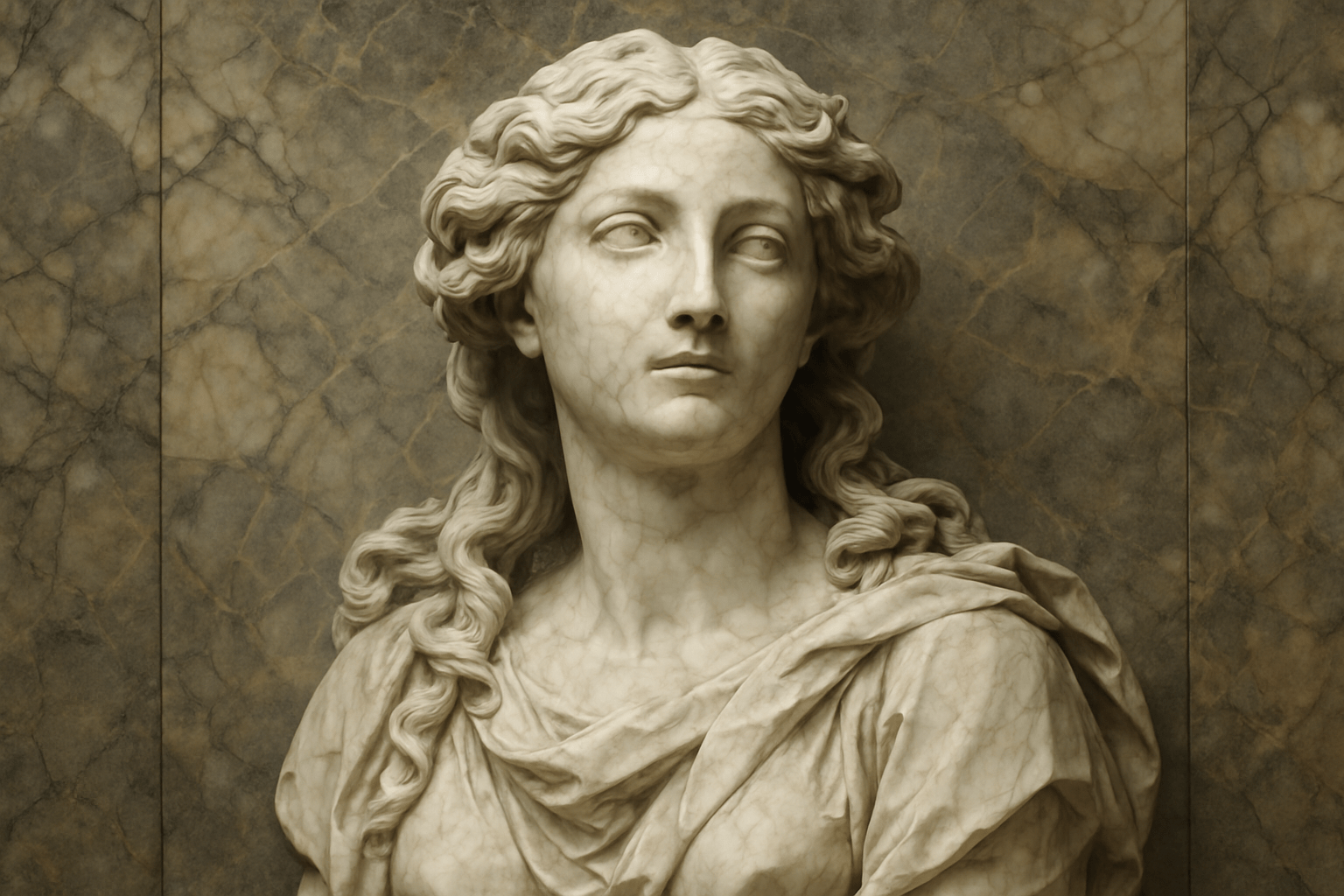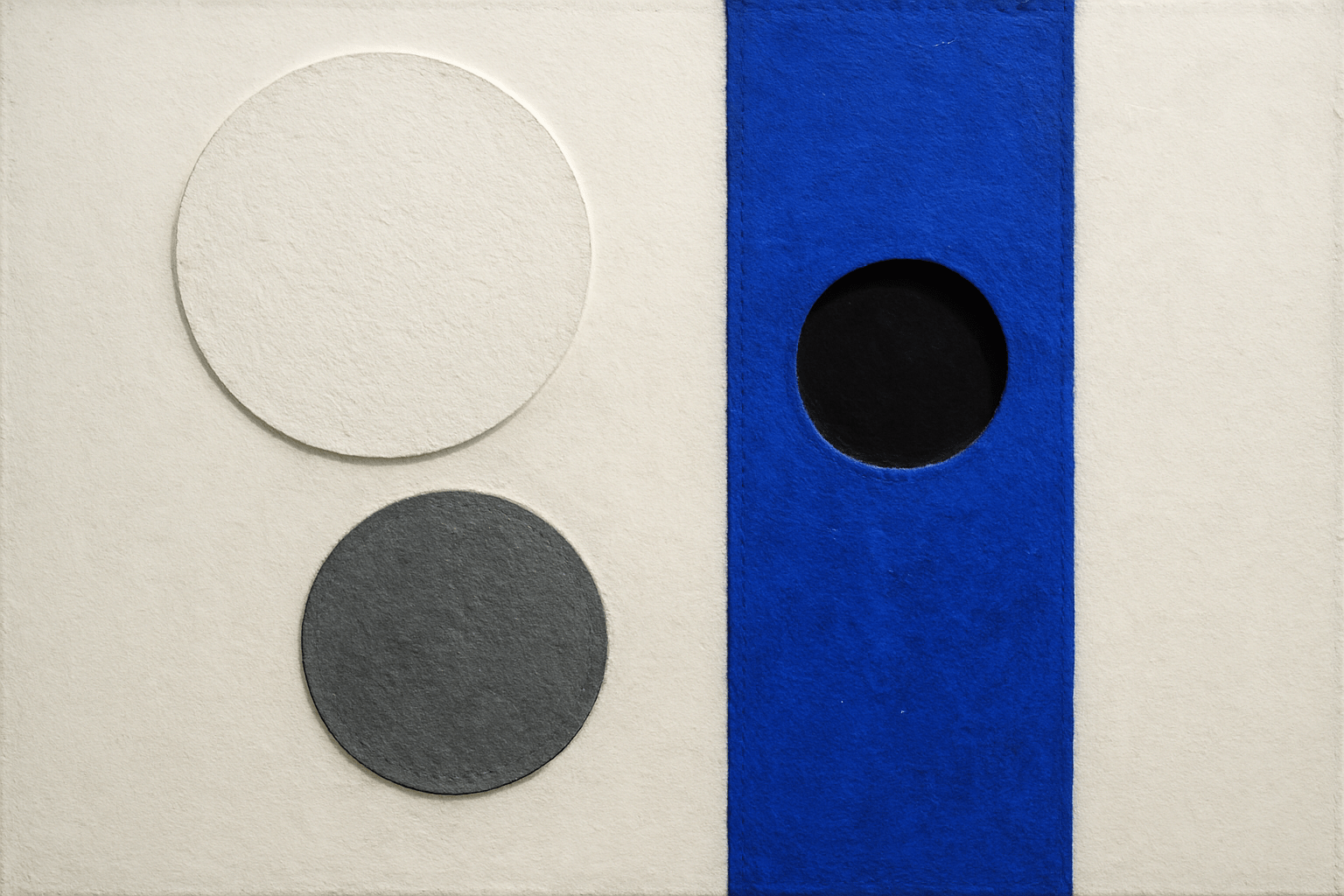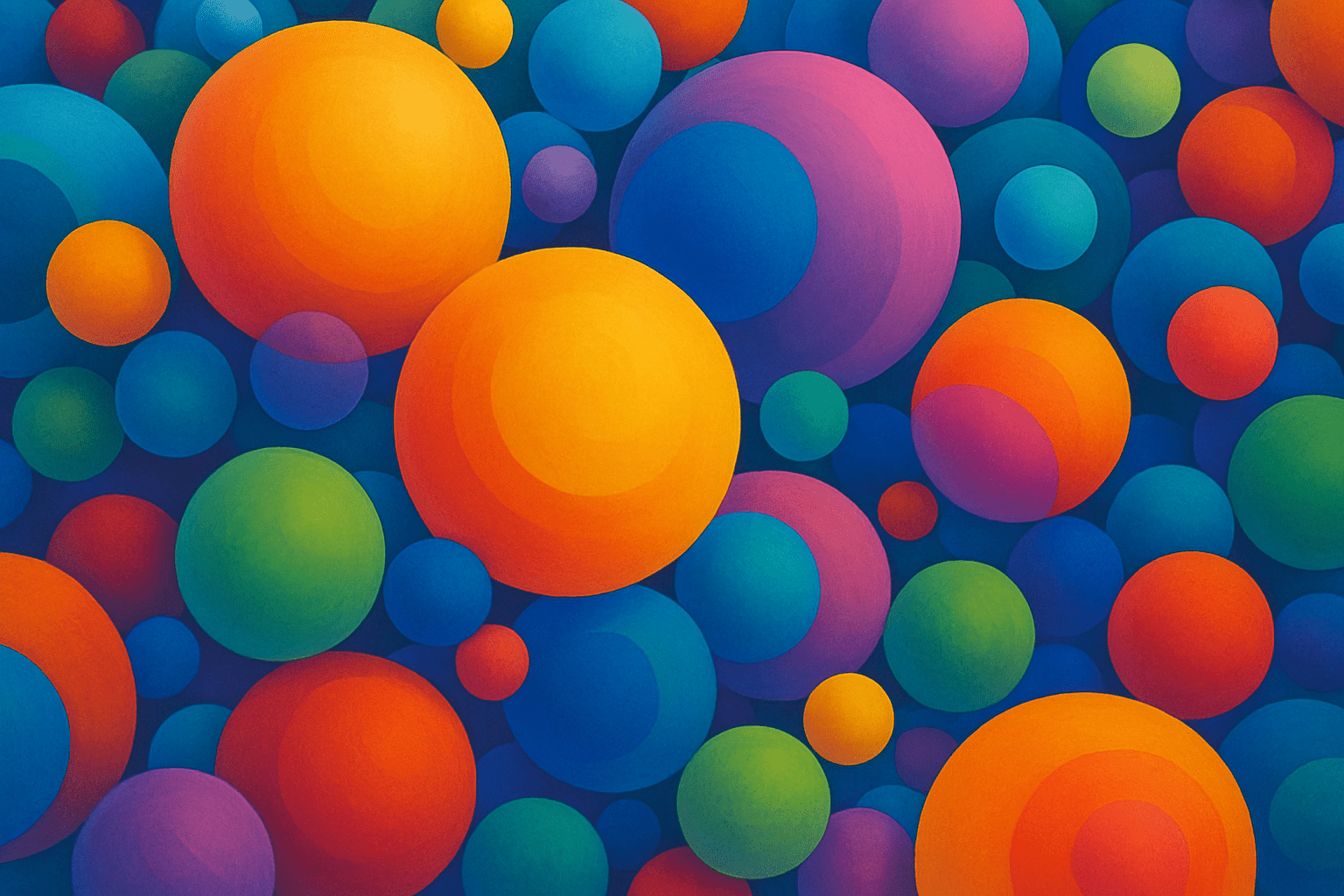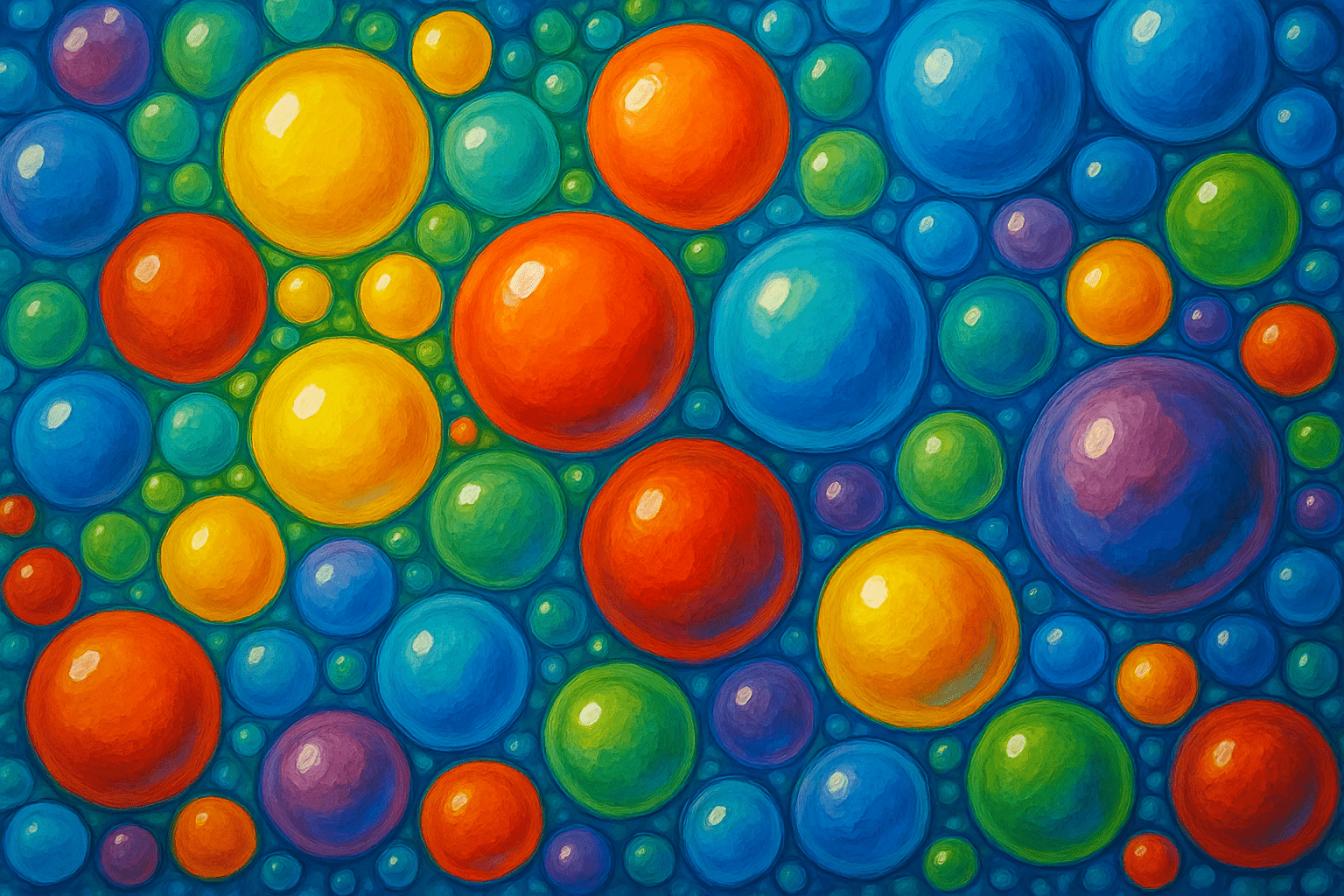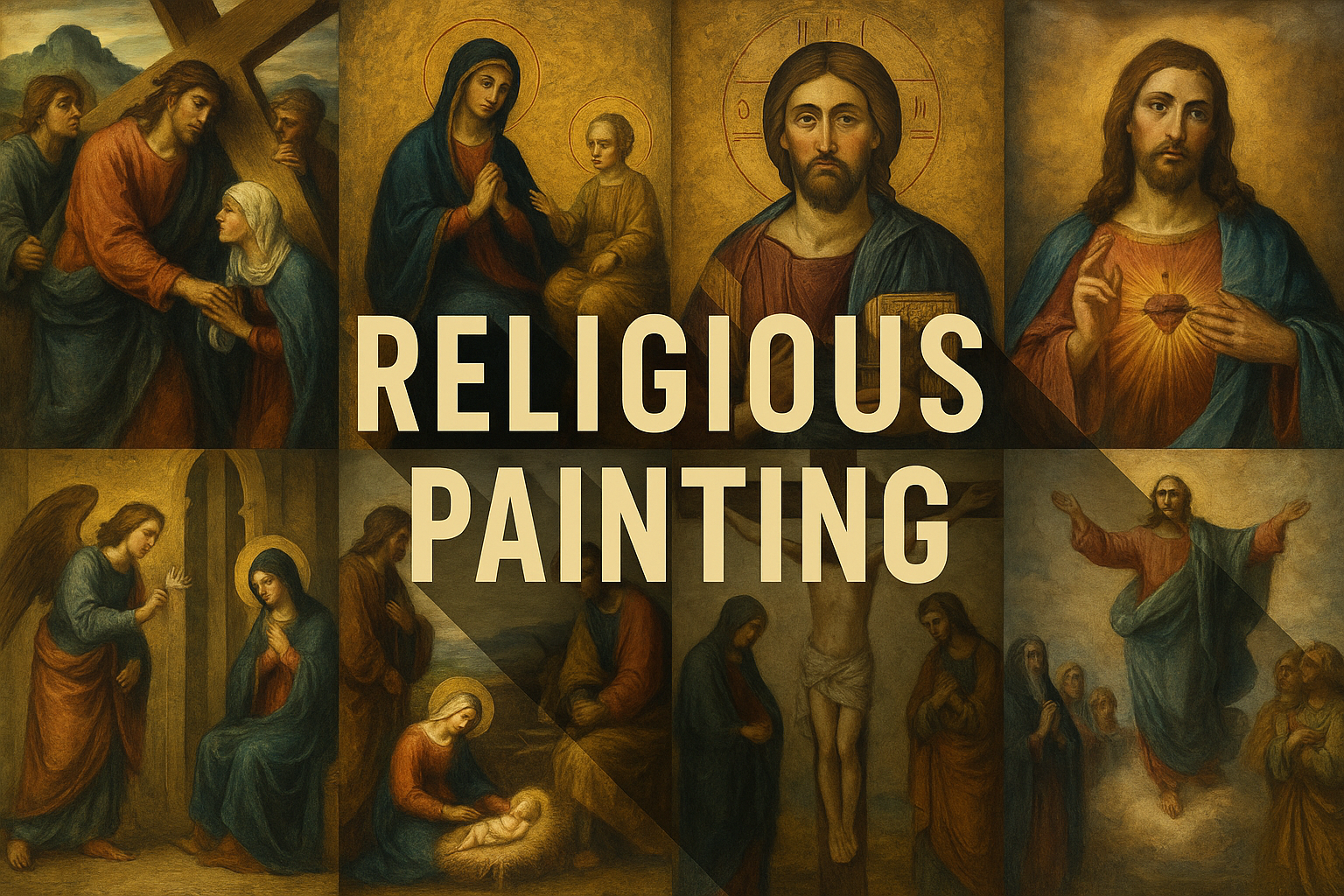
Religious painting
Religious painting is often characterized by its use of bright colors and simple, geometric shapes. The paintings often depict scenes from the Bible or other religious stories.
AOI thinking about Religious painting [+_~]-/
Overview and Quickfacts
Religious painting is a type of painting that focuses on religious subjects. These paintings can be of any religion, but are most commonly of the Christian faith. Religious paintings often depict scenes from the Bible, such as the Last Supper, or Jesus Christ on the cross. Other religious paintings may depict saints, angels, or other religious figures.
Can understand it also, as:
1. devotional painting; 2. sacred painting; 3. altar painting; 4. church painting; 5. icon
Categorize it as:
Impressionism, Modernism
.: Dreaming :.
holds a HAIKU for the art style
:. Thought is power .:
Detailed Description
Religious painting is a genre of painting that depicts religious subjects, often with a moral or spiritual message. Religious paintings can be found in churches, temples, monasteries, and other places of worship. They can also be found in private homes, where they may be used as devotional objects. Religious paintings have a long history, dating back to the early days of Christianity. Early Christian paintings often depicted scenes from the Bible, such as the life of Christ or the Passion of the Christ. In the Middle Ages, religious paintings were used to tell stories from the Bible to illiterate people. Many of these paintings were large and complex, with multiple scenes depicted on a single canvas. Famous religious paintings include the Sistine Chapel ceiling by Michelangelo, The Last Supper by Leonardo da Vinci, and The Raising of the Cross by Peter Paul Rubens. Religious paintings can be found in all cultures and religions, and they continue to be made today.
.. beep, beep, beep ..
<START OF TRANSMISSION>
1. Religious paintings are created to depict religious stories, figures, or events. 2. They are often found in churches, temples, and other religious buildings. 3. Religious paintings can be created in a number of different styles, depending on the artist and the culture. 4. Common subjects of religious paintings include Jesus, Mary, and other saints. 5. Religious paintings are often highly symbolic, and the meanings of the symbols can be interpreted in different ways. 6. Many religious paintings are considered to be works of art, and are highly valued by collectors. 7. Some of the most famous religious paintings include The Last Supper by Leonardo da Vinci, and The Sistine Chapel by Michelangelo. 8. Religious paintings can be used as a form of prayer or meditation. 9. Many people believe that religious paintings have the power to heal the sick or bring good luck. 10. There is a long history of religious paintings being created in the Eastern Orthodox Church. 11. The use of icons, or painted images of saints, is a central part of Orthodox worship. 12. Orthodox icons are often highly detailed and ornate, and can be quite large. 13. In the Orthodox Church, icons are not considered to be works of art, but rather are seen as holy objects. 14. Icons are often venerated by Orthodox believers, and may be kissed or bowed to. 15. The Catholic Church also has a long tradition of religious painting. 16. Catholic paintings often depict scenes from the Bible, or the lives of the saints. 17. Catholic paintings are often found in churches, and are often highly venerated by believers. 18. Many Protestant churches also make use of religious paintings. 19. In some cases, religious paintings may be seen as a form of idolatry, and are therefore discouraged. 20. There is a growing trend of contemporary artists creating religious paintings in a more abstract style.
<EOF>
.. robbel bob
Visual Examples from our image gallery
Coming soon, we are so slow .. might never come
Artists, Paintings, and more
(be aware, can be highly speculative)
Artists (be aware, speculation possible):
1. Giotto di Bondone (1266-1337) 2. Duccio di Buoninsegna (c. 1255-1318/19) 3. Cimabue (c. 1240-1302) 4. Pietro Cavallini (c. 1250-1330) 5. Simone Martini (c. 1284-1344) 6. Ambrogio Lorenzetti (c. 1290-1348) 7. Giovanni Pisano (c. 1250-1315) 8. Arnolfo di Cambio (c. 1240-1302) 9. Orcagna (c. 1315-1368) 10. Andrea Pisano (c. 1270-1348) 11. Nardo di Cione (c. 1320-1363/4) 12. Maso di Banco (c. 1320-1350) 13. Francesco Traini (c. 1260-1316) 14. Stefano da Verona (c. 1330-1389) 15. Jacopo Avanzi (died 1360) 16. Bartolomeo Vivarini (c. 1432-1499) 17. Antonio Vivarini (c. 1400-1458) 18. Giovanni d’Alemagna (c. 1400-1455) 19. NiccolÃÂò Pizzolo (c. 1420-1478) 20. Andrea del Verrocchio (c. 1435-1488) 21. Pietro Perugino (c. 1446-1523) 22. Domenico Ghirlandaio (1449-1494) 23. Sandro Botticelli (c. 1445-1510) 24. Filippino Lippi (c. 1457-1504) 25. Pietro da Cortona (1596-1669) 26. Luca Giordano (1634-1705) 27. Mattia Preti (1613-1699) 28. Giovanni Battista Gaulli (1639-1709) 29. Andrea Pozzo (1642-1709) 30. Carlo Maratta (1625-1713)
Artworks (be aware, speculation possible)
1. The Last Supper, Leonardo da Vinci (1498) 2. The Sistine Chapel ceiling, Michelangelo (1512) 3. The Hay Wagon, Pieter Bruegel the Elder (1565) 4. The Triumph of the Name of Jesus, Giovanni Battista Gaulli (1672) 5. The Calling of Saint Matthew, Caravaggio (1600) 6. The Adoration of the Magi, Giotto (1305) 7. The Baptism of Christ, Piero della Francesca (1450) 8. The Annunciation, Leonardo da Vinci (1472) 9. The Marriage at Cana, Paolo Veronese (1563) 10. The Crucifixion, Peter Paul Rubens (1612) 11. The Entombment, Michelangelo (1500) 12. The Raising of Lazarus, Rembrandt (1632) 13. The Last Judgment, Michelangelo (1541) 14. The Transfiguration, Raphael (1520) 15. The Assumption of the Virgin, Titian (1516) 16. The Nativity, Giotto (1305) 17. The Resurrection, Piero della Francesca (1463) 18. The Annunciation to the Shepherds, Guido Reni (1609) 19. The Adoration of the Shepherds, Gerard van Honthorst (1622) 20. The Adoration of the Magi, Hieronymus Bosch (1485) 21. The Temptation of Saint Anthony, Hieronymus Bosch (1485) 22. The Hay Wagon, Pieter Bruegel the Elder (1565) 23. The Conversion of Saint Paul, Caravaggio (1601) 24. The Crucifixion of Saint Peter, Caravaggio (1601) 25. The Martyrdom of Saint Matthew, Caravaggio (1602) 26. The Calling of Saint Matthew, Caravaggio (1600) 27. The Last Supper, Leonardo da Vinci (1498) 28. The Sistine Chapel ceiling, Michelangelo (1512) 29. The Hay Wagon, Pieter Bruegel the Elder (1565) 30. The Triumph of the Name of Jesus, Giovanni Battista Gaulli (1672)
Epoch
The time period of the art style Religious painting is from the Renaissance to the present.
AI ART RESSOURCES (AKA, well Tools)
Helping tools -> predefined search links on other pages:







